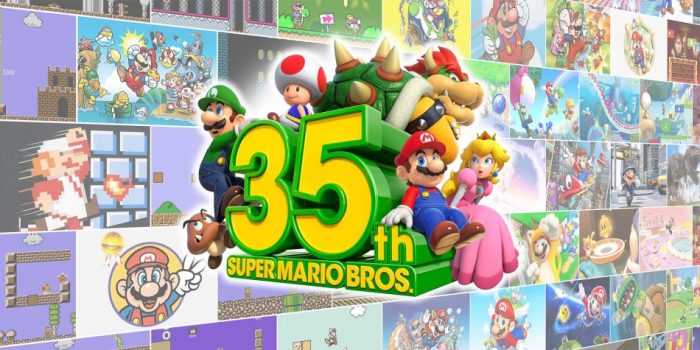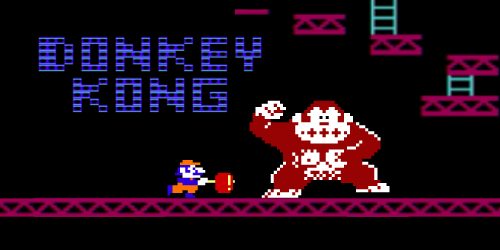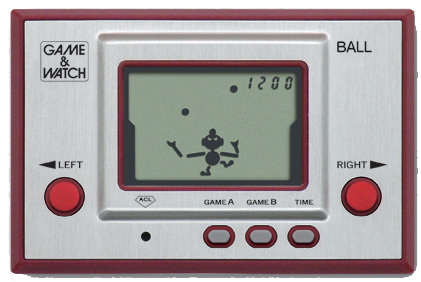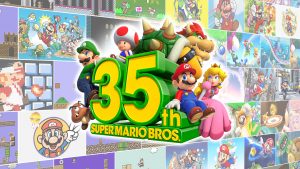
With the 35th anniversary of the landmark Famicom/NES platformer Super Mario Bros. being celebrated this month with high-profile re-releases of some of his most popular games, including Super Mario Bros. itself on a special, dedicated handheld modeled after the Game & Watch, we thought it’d be interesting to look back even further to Mario’s roots in Donkey Kong and beyond. Before Mario was super, he still was a big part of Nintendo’s history which is what we’re tackling today. Let’s-a go!
Jumpman & Donkey Kong

By now, it’s common knowledge that before Mario was super, a plumber, or even Mario for that matter, he was originally a carpenter known simply as Jumpman in Nintendo’s first major international hit, Donkey Kong. Less well known is that he was called “Mr. Video” internally at Nintendo with the idea of him being an everyman character who could fit into any role across multiple video games. While that idea would persist, to some extent at least, the character would go through substantial development to become the Mario we know today.
Miyamoto Shigeru, along with chief engineer Yokoi Gunpei and others, developed the arcade game based on Miyamoto’s story setup and characters that were inspired by Popeye, Beauty and the Beast, and King Kong. After releasing in 1981, Donkey Kong became one of the most successful arcade games of all time leading to a direct sequel the next year, Donkey Kong Jr., along with numerous ports of the game to home consoles and computers.
Becoming Mario: Bros. & Game & Watch

In Donkey Kong Jr., Mario surprisingly became the antagonist, taking on the role of a villainous circus master who is holding Donkey Kong captive. He was also now officially named Mario, after Mario Segale, an American businessman who was the landlord of Nintendo of America’s warehouse and infamously berated N.o.A. president Arakawa Minoru in front of his co-workers when he came to collect overdue rent. Throughout the 80s, Mario would also appear in various roles in many of Yokoi’s Game & Watch LCD games like Mario's Cement Factory, Mario's Bombs Away, and Donkey Kong Hockey, embodying that everyman spirit of his initial conception.
1983 would bring Mario’s next big game, Mario Bros. which would introduce him, and his brother Luigi, as Italian-American plumbers working in the sewers of New York City. This would also introduce other iconic elements important to the series like pipes, coins, turtle enemies, and more. Another important change to the character would be letting him survive falls from any height, as opposed to Donkey Kong which had fatal fall damage, which was suggested by Yokoi during development leading to him being something of a superhuman athlete, albeit a bit of a pudgy one.
Running, Reffing, Golfing, and Jumping on Famicom
Nintendo’s first proper game console, the Family Computer, or Famicom for short, would also be released in Japan in 1983 and was reportedly specifically designed around being able to play a solid game of Donkey Kong and did so far and beyond any other home version and would, of course, lead to many more Mario games as well.
We mentioned Mario’s athleticism before and Nintendo truly took that to heart with many of the Famicom’s sport games having Mario as player, referee, or cameo character. This would begin a long tradition of Mario sports titles that has persisted to this day, starting with Tennis, Golf, and arguably, Pinball if you’re feeling generous with your definition of athleticism. This would continue with later NES/Famicom titles like Punch-Out!! (1987) and many early Game Boy games including Baseball, F1 Race, and the system’s own versions of Golf and Tennis, but that’s all in the future after Super Mario Bros.
Fight the Future

Mario would return to his arcade-era workman roots one last time pre-SMB in Wrecking Crew where he is tasked with demolishing various parts of buildings while avoiding odd anthropomorphic wrenches, eggplants, and rival Foreman Spike. Although Wrecking Crew and its unique puzzle-platformer gameplay would be something of a dead-end in the Mario series save for a somewhat obscure, Japan-only match-three puzzler on Super Famicom, it still deserves recognition as part of Mario’s history before the core canon was beginning to get established in Super Mario Bros. and as a game that stands on its own as an interesting, albeit less revolutionary work.
Final Thoughts
Altogether, Mario had come a long way even before entrenching himself as a hero for all ages in Super Mario Bros. and this legacy should also be respected and remembered alongside that masterwork of a video game. To all the Mario fans out there, we hope that you’re enjoying the 35th Anniversary festivities with us at Honey’s Anime and would love to hear what you think about the character and early Mario games too! Feel free to leave us a comment below and be sure to stick around Honey’s Anime for more of all things awesome, retro games and otherwise! Until next time, “thank you so much for-to-reading my article.” Wahoo!


